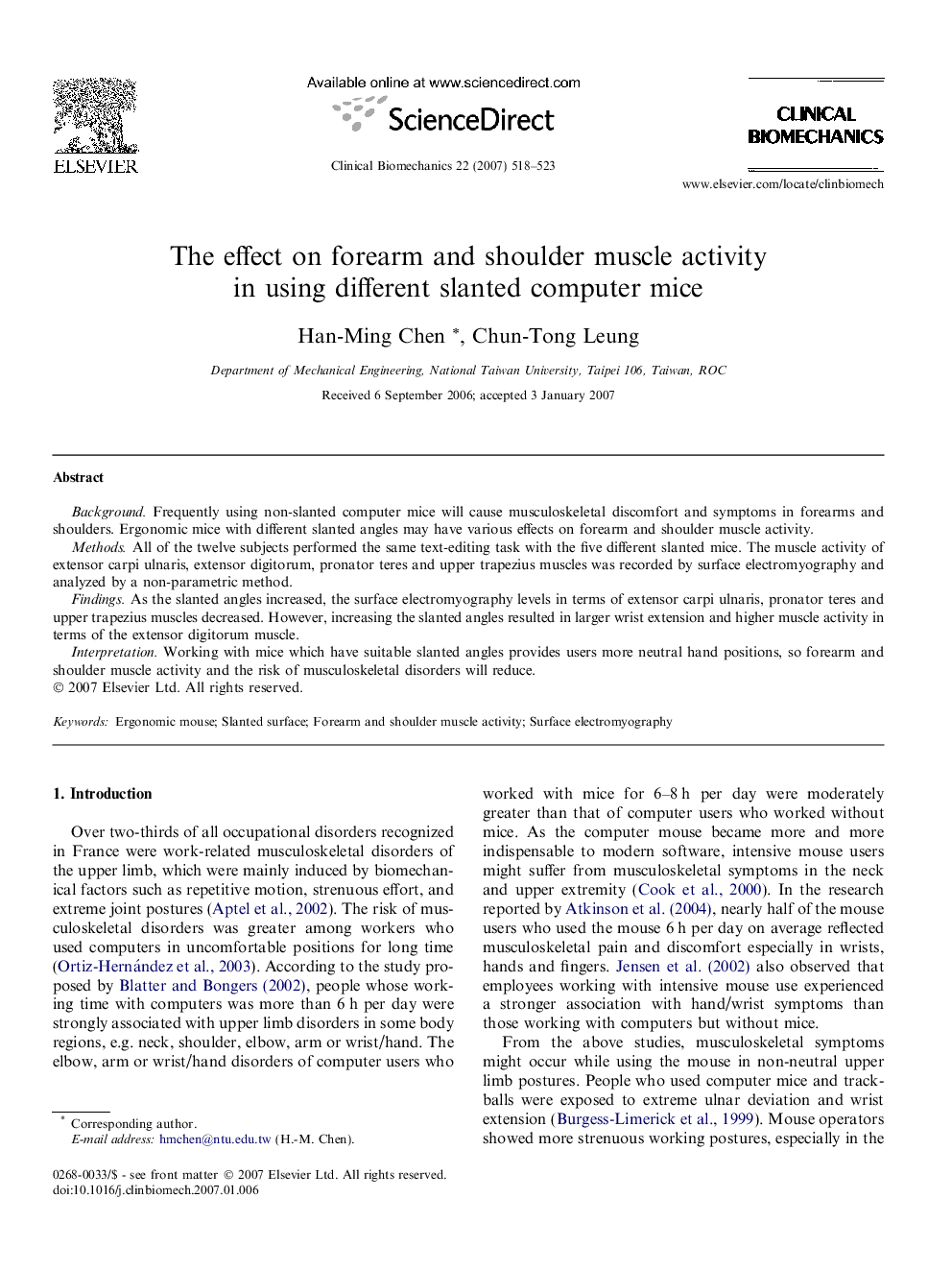| Article ID | Journal | Published Year | Pages | File Type |
|---|---|---|---|---|
| 4051363 | Clinical Biomechanics | 2007 | 6 Pages |
BackgroundFrequently using non-slanted computer mice will cause musculoskeletal discomfort and symptoms in forearms and shoulders. Ergonomic mice with different slanted angles may have various effects on forearm and shoulder muscle activity.MethodsAll of the twelve subjects performed the same text-editing task with the five different slanted mice. The muscle activity of extensor carpi ulnaris, extensor digitorum, pronator teres and upper trapezius muscles was recorded by surface electromyography and analyzed by a non-parametric method.FindingsAs the slanted angles increased, the surface electromyography levels in terms of extensor carpi ulnaris, pronator teres and upper trapezius muscles decreased. However, increasing the slanted angles resulted in larger wrist extension and higher muscle activity in terms of the extensor digitorum muscle.InterpretationWorking with mice which have suitable slanted angles provides users more neutral hand positions, so forearm and shoulder muscle activity and the risk of musculoskeletal disorders will reduce.
